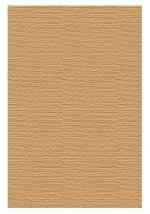|
This section contains 384 words (approx. 2 pages at 300 words per page) |
Encyclopedia of World Biography on Arthur Garfield Dove
Arthur Garfield Dove (1880-1946) was a pioneer of modern art in America. As early as 1910 he was abstracting forms in nature to suggest landscape situations.
Arthur G. Dove was born in Canandaigua, N.Y., on Aug. 2, 1880. When he graduated from Cornell University in 1903, he became a magazine illustrator, an occupation that would supply his livelihood until 1930, when, with the assistance of Duncan Phillips, he was able to devote all of his time to painting.
In 1907 Dove joined the painters Alfred Maurer and Arthur B. Carles, Jr., on a trip to Europe. Dove spent most of his time in Paris, where he saw the art of the Fauves and was particularly impressed by the work of Henri Matisse. Dove exhibited in the Salon d'Automne in 1908 and 1909.
Dove returned to America in 1910 and continued to paint in an essentially impressionistic manner, though moving more and more toward abstraction. These works closely resemble Wassily Kandinsky's first abstractions, although there is no possibility of an influence since both artists were working along the same lines at about the same time. In his paintings Dove sought to project the essence of nature by ridding forms of extraneous detail and emphasizing rhythms. He replaced bulk with pattern, heightened and modified color, and simplified contours. In 1911 Dove exhibited his Parisian works in a group show at Alfred Stieglitz's gallery in New York City. The following year Dove had his first one-man show there, exhibiting 10 of his abstract canvases.
Dove's most original and striking works are his collages, such as the Portrait of Ralph Dusenberry (1924). Here he assembled shingles, a page from a hymnbook, a carpenter's folding rule, and an American flag. The work is a form of pictorial biography of a man whom Dove had actually known. In his collage Goin' Fishin' (1925) he evoked the spirit of rural America by combining pieces of a bamboo fishing pole with a denim shirt. Dove's later painting is more and more abstract. Fog Horns (1929) suggests piercing but distant blasts penetrating a thick fog through fuzzy-edged, concentric forms against a solid, heavy gray sky.
Dove exhibited annually at An American Place, the new Stieglitz gallery. He was a virtual recluse for the last decade of his life, first at Geneva, N.Y., and then at Centerport, N.Y., where he died on Nov. 23, 1946.
|
This section contains 384 words (approx. 2 pages at 300 words per page) |


